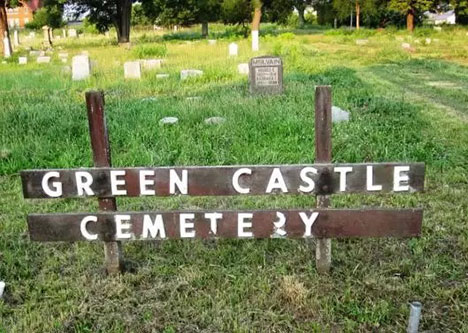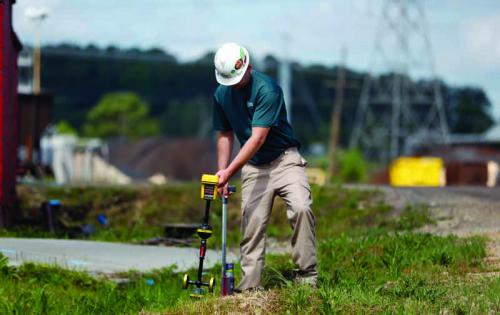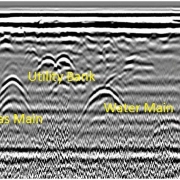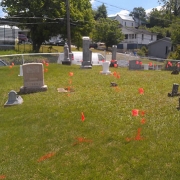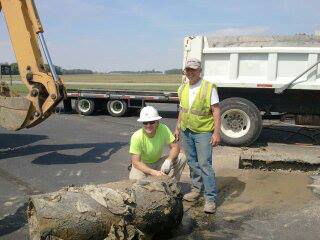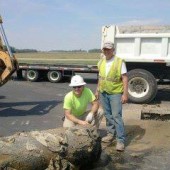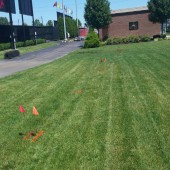No Bones About It: GPR Gets the Job Done!
GPR Data Analysis
As an underground detective, my daily tasks revolve around using a magical device to create a treasure map of sorts for my client, revealing the many wonders that are hidden within the earth. Alright, so I’m exaggerating my job description a bit — you caught me. I’m not so much as looking for gleaming buried treasure as often as I am using a ground penetrating radar (GPR) machine and GPR data analysis to identify underground utilities, USTs, and various other next-to-normal things. However, we occasionally receive strange inquiries involving the aid with discovering time capsules or to locate suspected unmarked graves that never fail to add a bit of diversity to our lives. The Greencastle Cemetery job did just that.
Burial Spaces for Civil War Soldiers
We were assigned to confirm locations for both unmarked and marked burial spaces for at Old Greencastle Cemetery which has 211 grave sites, which are vastly inhabited by Civil War soldiers. Old Greencastle Cemetery dies directly off a dirty, dank side street in West Dayton, OH. The neighborhood was dark and run down and foreshadowed the melancholy task ahead. Loss of funding, overcrowding from the mass amount of hastily buried soldiers, and years of climate deterioration created the perfect recipe for ruin and neglect which deemed it an inactive cemetery.
Dayton Sons of Union Veterans of the Civil War Major General W.T. Sherman Camp –let’s call them “SUVCW.” SUVCW sought to clean up the section of cemetery dedicated to its Civil War veterans and give the brave men the honor they deserve. SUVCW began to reach out to the community in search of individuals who could give their time to such an emotional and delicate endeavor. Over 400 hours were given to the restoration by veteran groups, ground maintenance professionals, workers provided by the sheriff’s department, and community volunteers. Let’s just say they urned their keep.
Grave Encounters of the GPR Kind
During our two-hour duration there, we used GPR to locate 9 long-forgotten graves. GPR is a geophysical method that uses radar pulses to image the subsurface. This method was perfect for this job because it uses non-destructive electromagnetic radiation waves and detects the reflected signals from subsurface structures. One could say its vast advantages make GPR a never-dying market.
With GPR data analysis, we were able to determine exactly where graves were so that they could then be properly marked and/or moved to a new site. We do work for several cemeteries a year, but to be directly involved in the excavating of history was a thrilling experience.
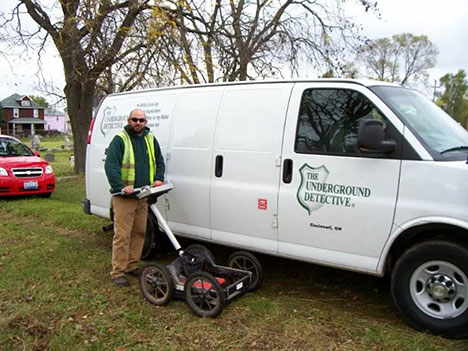
Underground Detective at S Broadway St & Noble Ave Dayton, OH 45417
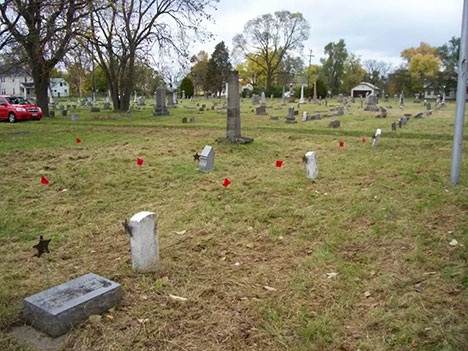
Marking graves at S Broadway St & Noble Ave Dayton, OH 45417
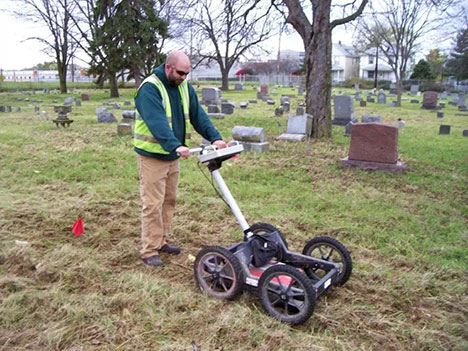
Locating a grave with GPR at S Broadway St & Noble Ave Dayton, OH 45417


